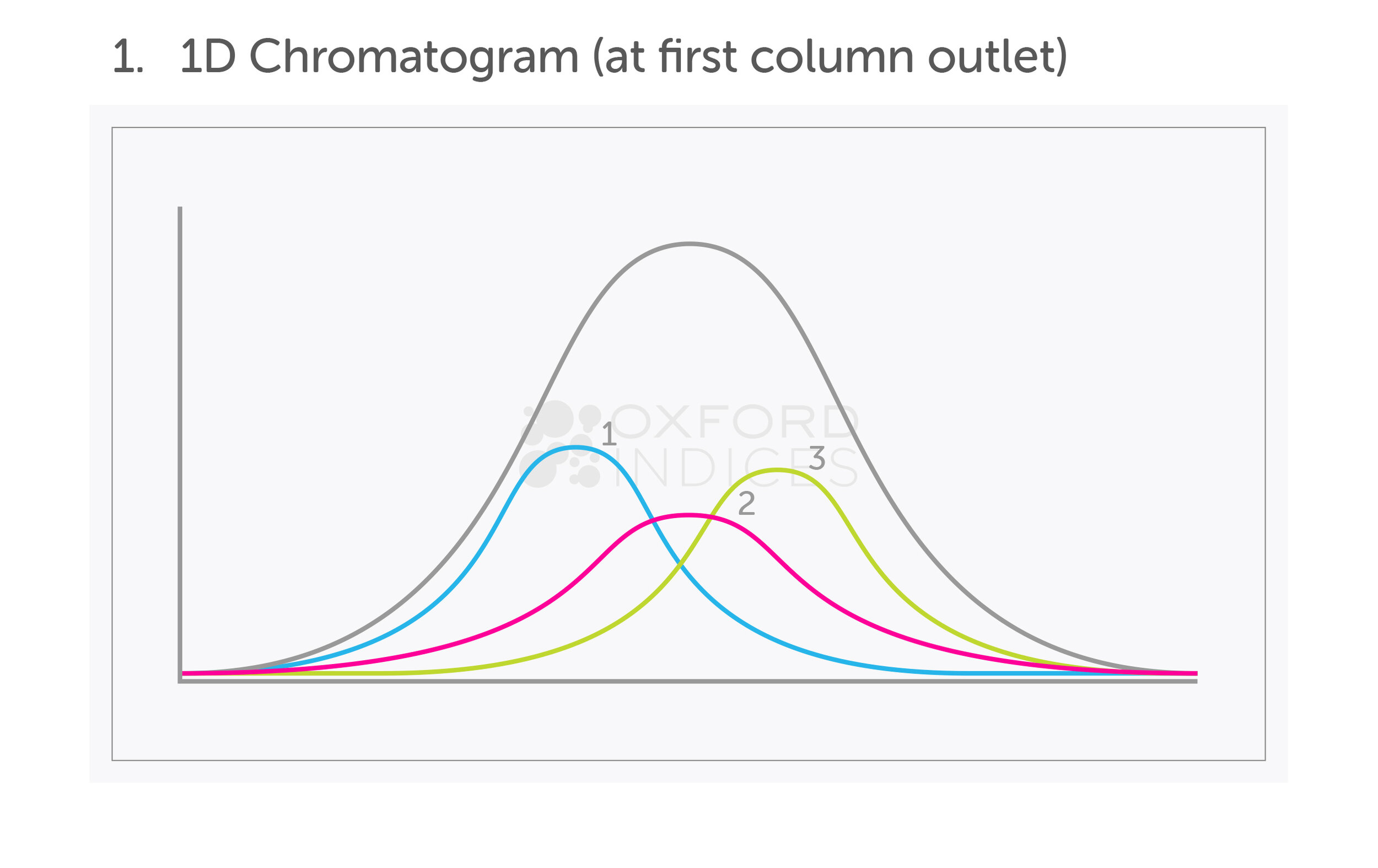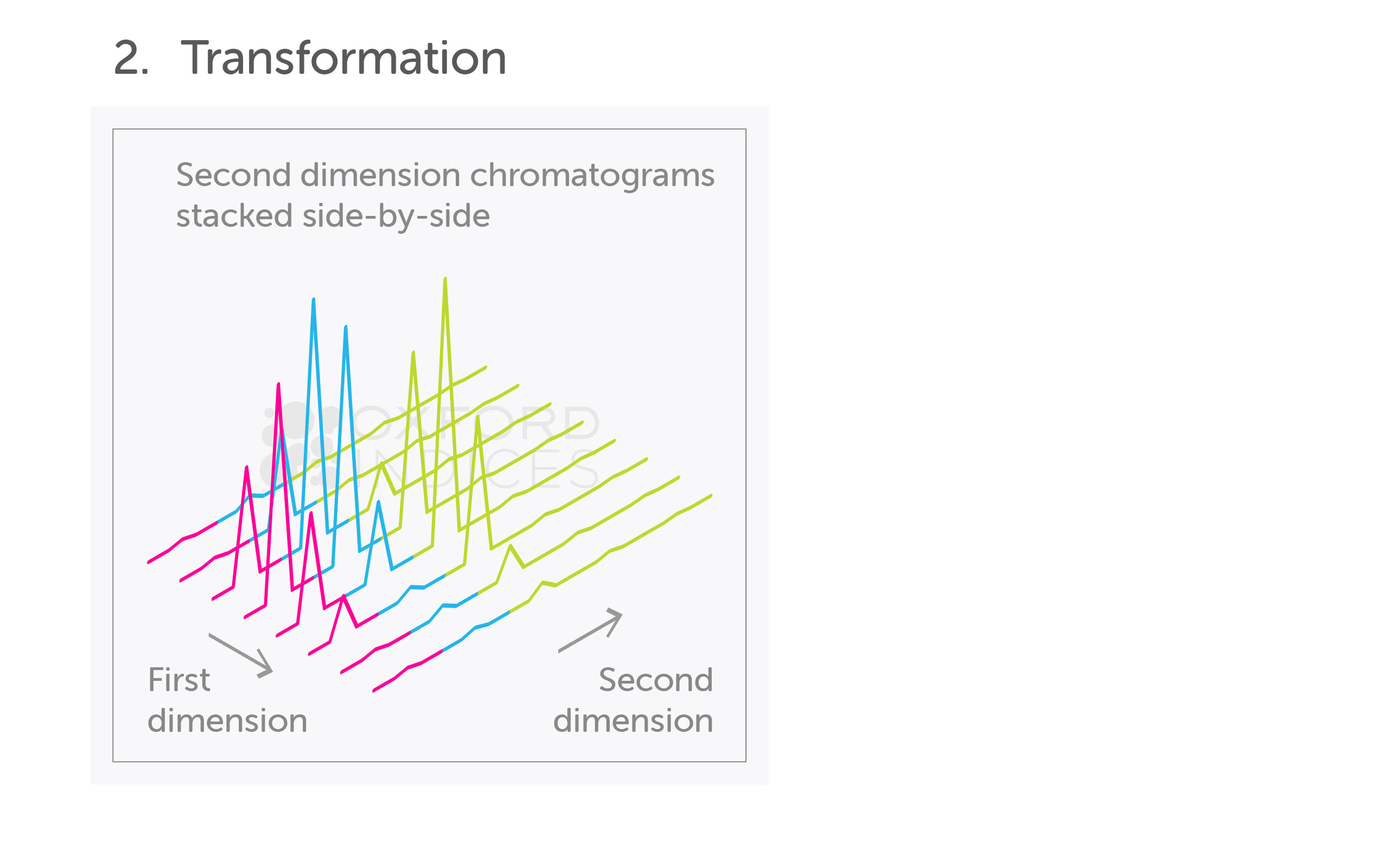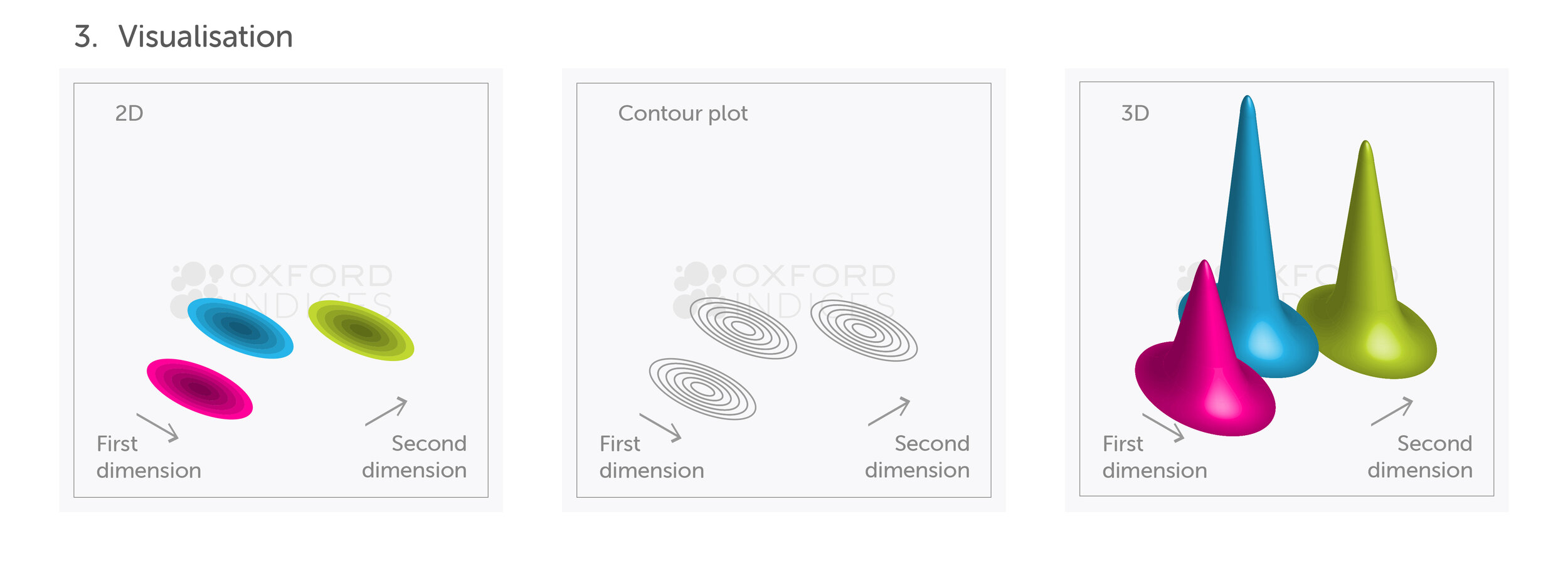One- and two-dimensional gas chromatography
Organic compounds — molecules with carbon at the centre — fall in to two categories for analysis. Larger molecules with higher molecular mass and polarity (~80%) are suitable for high-performance liquid chromatography while smaller, lighter molecules (~20%) require detection by gas chromatography.
Which suits your requirements?
For the range of lighter compounds Oxford Indices’ laboratory delivers both single and two-dimensional gas chromatography analytical services. When the compounds of interest are identified ahead of the test, single chromatography is a robust solution.
Oxford Indices however specialises in two-dimensional gas chromatography (GCxGC). The second dimension enables discovery and identification of both known and unknown compounds, a capability that is rarely available. Only 20% of this smaller group of organic compounds can be analysed easily by one-dimensional gas chromatography (GC). For everything else, the second dimension offers a significant advantage.
Two-dimensional GC contour plot of lubricant oil, with first dimension retention time on the x-axis, the second-dimension retention time on the y-axis, and peak intensities are on the z-axis.
Compound separation
Compounds with similar chemical and physical properties elute in clusters in a GC analysis. This means that identifying one component in the cluster can provide clues as to the identity of neighbouring peaks. Complex samples contain thousands of individual analytes; by using GCxGC, the number of identifiable peaks compared to a one-dimensional GC analysis increases exponentially. Detecting and identifying more peaks in a sample can give meaningful information that would otherwise be impossible with single GC alone, and can increase certainty.
Environmental, biological, petroleum testing
GCxGC provides superior chromatographic peak capacity, selectivity, and lower detection limits for the analysis of small molecules when coupled to Time-of-Flight Mass Spectrometry (TOF-MS). The analysis of complex environmental, biological, petroleum and food samples using single dimension gas chromatography often results in a large area of unresolved components. The second dimension offers the ability to separate out previously unresolved coelutions found in many complex mixtures.
Discovery and identification
There are many benefits to using GCxGC for the analysis of complex samples. The high concentration matrix components can be separated from analytes of interest with chromatography prior to MS detection. Separating interferences from low concentration analytes gives a higher quality match when using mass spectrometry library database searching compared to one-dimensional GC analysis. A peak with a high MS library match increases the confidence of positive identification. The GCxGC contour plot is structured in a way that is helpful for non-targeted analyte identification.




